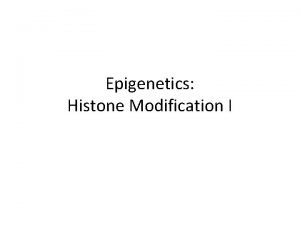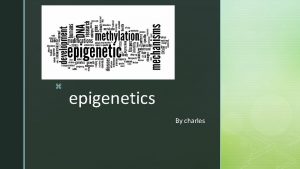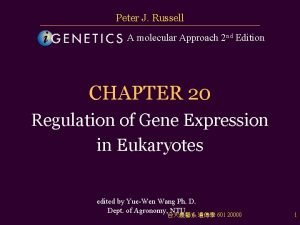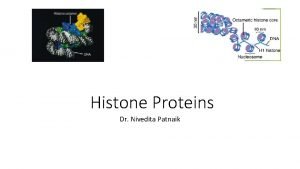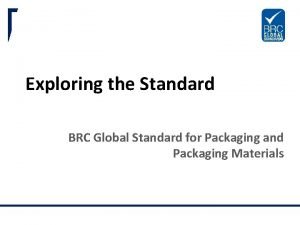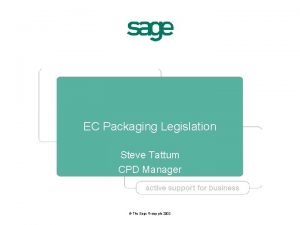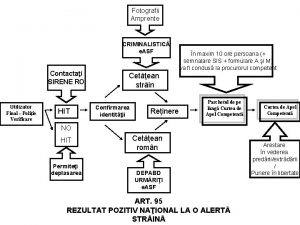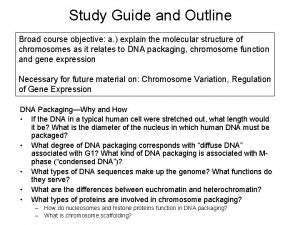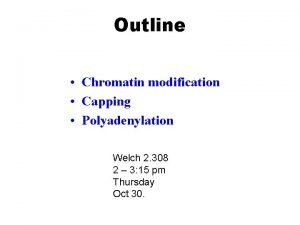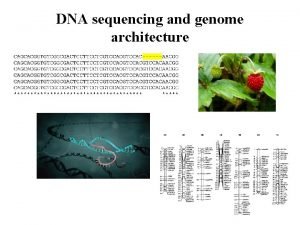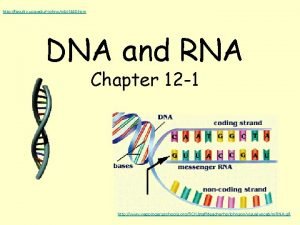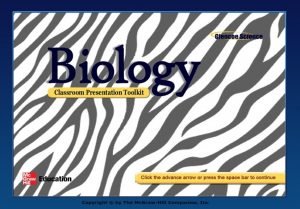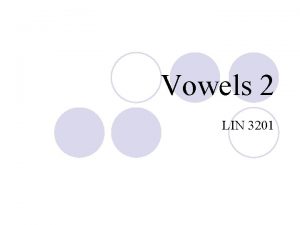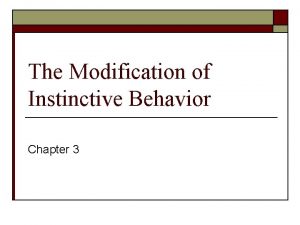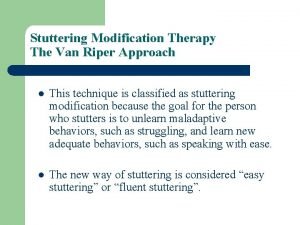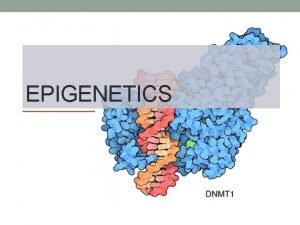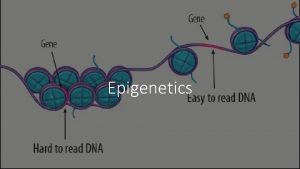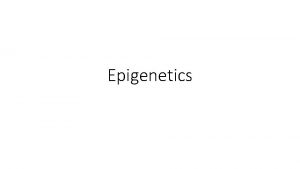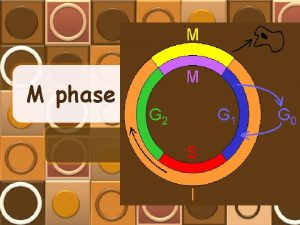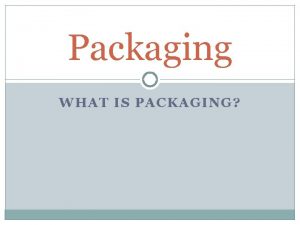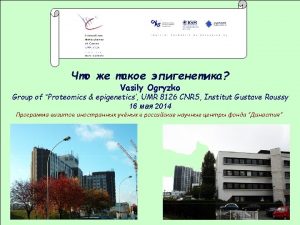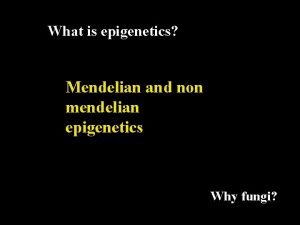Epigenetics Histone Modification I Nucleosome A packaging unit















- Slides: 15

Epigenetics: Histone Modification I

Nucleosome • A packaging unit for DNA (=H 3/H 4 tetramer + two sets of H 2 A/H 2 B dimer) • DNA (- charge) and histones (+ charge) • histones = tails and globular domains

Higher-Order Packaging of Chromatins • An efficient packaging strategy (10, 000 -fold compaction) • A barrier for gene transcription

Three strategies to change nucleosome arrangement • used for regulating gene transcription • cis-effects: acetylationdriven activation • trans-effects: readerdriven transcriptional control • Nucleosome repositioning and displacement – ATPdriven reaction

Various histone modifications • H 3 and H 4 are most modified • Lys and Arg are most frequent targets • Acetylation on Lys: activation • Methylation on Lys: activation or repression • Methylation on Arg: repression • Ubiquitylation: repression • Phosphorylation on Ser Thr: cell cycle signal

Major enzymes for histone modifications - Modifications are reversible (HAT vs HDAC, Kinase vs PPase) - Methylation on Lys has different states (mono, di, tri) - Methylations are very stable

Consequences of histone modifications - Modification on each amino acid has a different meaning - Two different modifications on one amino acid are exclusive and have opposite signals (K 27 me 3 vs K 27 ace) - Readers (Acetylation- Bromo proteins, Methylation- Chromo proteins) - Main epigenetic regulators Polycomb (repression memory) H 3 K 27 me and H 2 AK 119 ub Trithorax (activation memory) H 3 K 4 me Position Effect Variegation(repression) H 3 K 9 me

Polycomb mutant Sex com in the front legs of male flies Pc mutants have sex comb in other legs -> homeotic transformation mis-expression of Hox genes Polycomb-Group (Pc. G) genes control Hox genes and other developmental genes Main repression mechanism -> provides “cellular memory or transcriptional memory”

Cellular memory - Mammals 200 cell types vs plants 30 cell type - Different cell types have their own identity in terms of transcriptional programs - Epigenetic modifications serve as a molecular basis for cellular memory

Cellular memory - Early genetic studies identified two types of fly mutants - Polycomb mutants – defects with repression memory (H 3 K 27 me 3 and H 2 AK 119 ub) - Trithorax mutants – defects with activation memory (H 3 K 4 me 3)

Pc. G mutants - a & b – imaginal disc - c & d – suz 12 mutant - e & f – Ring 1 A mutant

Core Pc. G genes PRC 2 well conserved PRC 1 only in metazoans Many duplications of PRC 2 members in plants

Core Pc. G genes of PRC 2 - three main components Ezh 1/2, Suz 12, Eed Ezh 1/2 - HMT enzyme Eed – glue protein Suz 12 – no function yet - several other proteins Rb. Ap 48/49, Jarid 2, Aebp 2 Rb. Ap 48/49 – histone binding Jarid 2 – DNA binding Aebp 2 – DNA binding

Pc. G-dependent repression PRC 2 -> H 3 K 27 -> PRC 1 -> H 2 AK 119 ub Targeting of PRC 2 & PRC 1 is mediated either by nc. RNA or DNA-bindig protein Maintenance of H 3 K 27 me 3 during DNA replication is mediated through Eed

Genome-wide PRE sites - more than Hox cluster - many genes with tissue-specific genes are controlled through PRC-mediated mechanisms - PRC 2 serves as temporary repression mechanism (poised state) in early stage embryo - modify Cp. G islands
 Histone modification epigenetics
Histone modification epigenetics What is epigenetics
What is epigenetics Nucleosome remodeling
Nucleosome remodeling Nucleosomes
Nucleosomes Brc global standards directory
Brc global standards directory Steve tattum
Steve tattum Asf
Asf Euchromatin
Euchromatin Histone tail
Histone tail C value paradox
C value paradox A ________ is formed from beadlike histone-dna complexes.
A ________ is formed from beadlike histone-dna complexes. Bead like structures formed by dna and histone molecules
Bead like structures formed by dna and histone molecules Unit 6 review questions
Unit 6 review questions Tense lax vowel chart
Tense lax vowel chart Mention two ways of modification of instinct
Mention two ways of modification of instinct Stuttering modification approach
Stuttering modification approach
